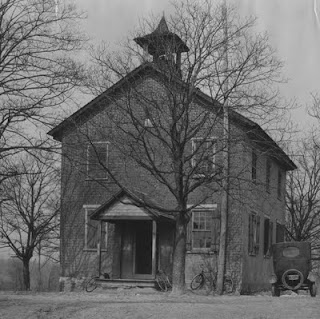Sixth Street and Baker
I regret to say that I have no post to make this week. I'm waiting on documents from Wayne County for two separate projects I'm working on. Until then, I hope you enjoy this photo of the fire station that once stood on the southwest corner of Sixth Street and Baker (now Bagley). Courtesy of the Burton Historical Collection, Detroit Public Library The Detroit Fire Department's Engine Company No. 4 was erected in 1871. In 1918, it was replaced with an updated facility, seen in this 1976 photograph: The building still stands today, but it no longer serves as a fire station. It has been converted into the law offices of Gregory J. Reed & Associates . This intersection is half a block from the Susan Buchanan House, profiled previously.





